Insects such as lady beetles, stink bugs, and boxelder bugs normally live outdoors but can become a nuisance to homeowners during the fall and winter months when they seek shelter indoors to escape the cold weather outside.
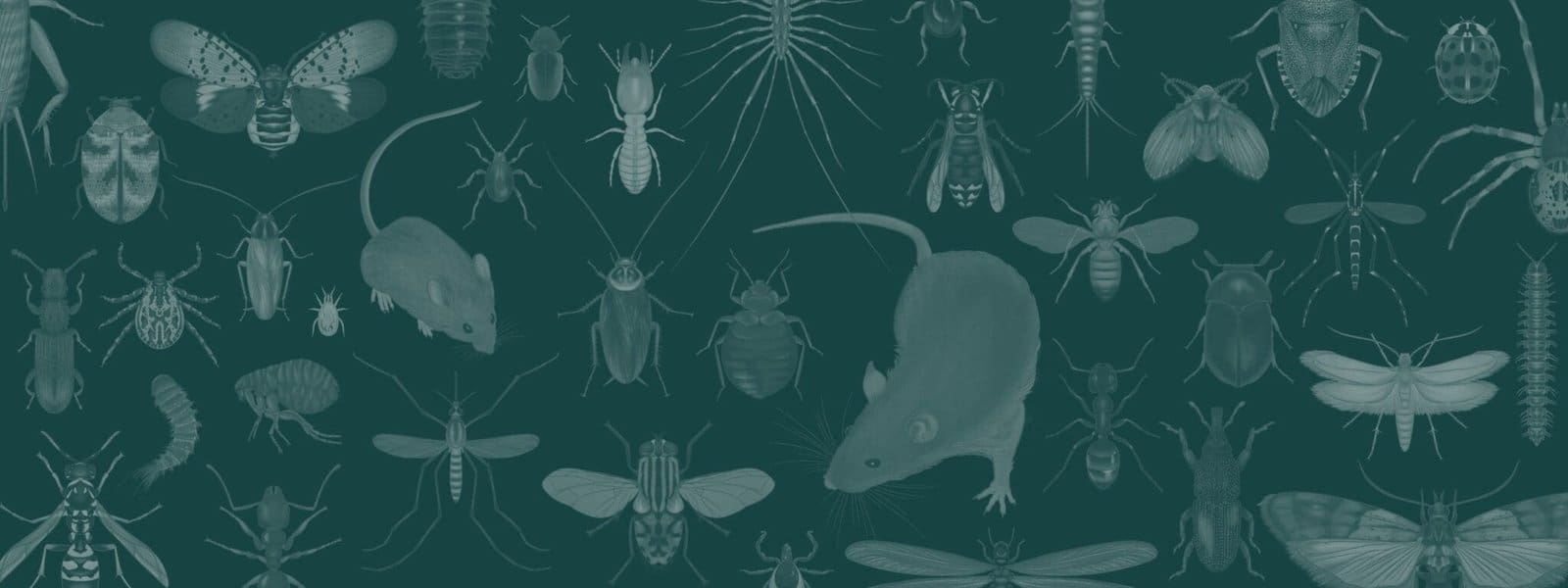
Pest Species in New York City / Tri-State Area:
Multicolored Asian Lady Beetle
Harmonia axyridis
Multicolored Asian lady beetles look like large ladybugs, and they come in a wide range of colors and patterns.
These beetles form large aggregations with up to tens of thousands of individuals. They’re usually seen in the fall, swarming in sunlit areas and on light-colored buildings.
They may bite when they land on people, which sometimes causes an allergic reaction. When threatened, they also release a foul-smelling liquid that leaves behind yellowish stains.

Size: 1/4″ – 1/3″ long (6 – 8 mm); about the size of an apple seed
Color: Several color patterns (morphs) ranging from yellowish-orange to red, with or without black spots
Shape: Round, dome-shaped body with short antennae, smooth elytra, and 6 legs
Identifying Features
- 6 thin, reddish-brown legs
- Short, clubbed antennae
- Head and pronotum are white, with black markings that form a “M” or “W” shape
- Round, dome-shaped body with hardened forewings (elytra) covering the abdomen
- Depending on the morph, it may have a yellowish-orange or red shell with anywhere from 0–22 black spots, or a black shell with 2–4 red spots
- Able to fly
Soldier Beetles / Leatherwings
Cantharidae spp.
Soldier beetles are a common outdoor pest in the summer. They closely resemble fireflies or “lightning bugs,” which belong in the same family.
These insects are mostly beneficial and they do not bite or sting. However, they can become a nuisance when they enter homes in buildings in the fall seeking places to spend the winter.
Soldier beetles are also known as “leatherwings” because of their soft, leathery wing covers.
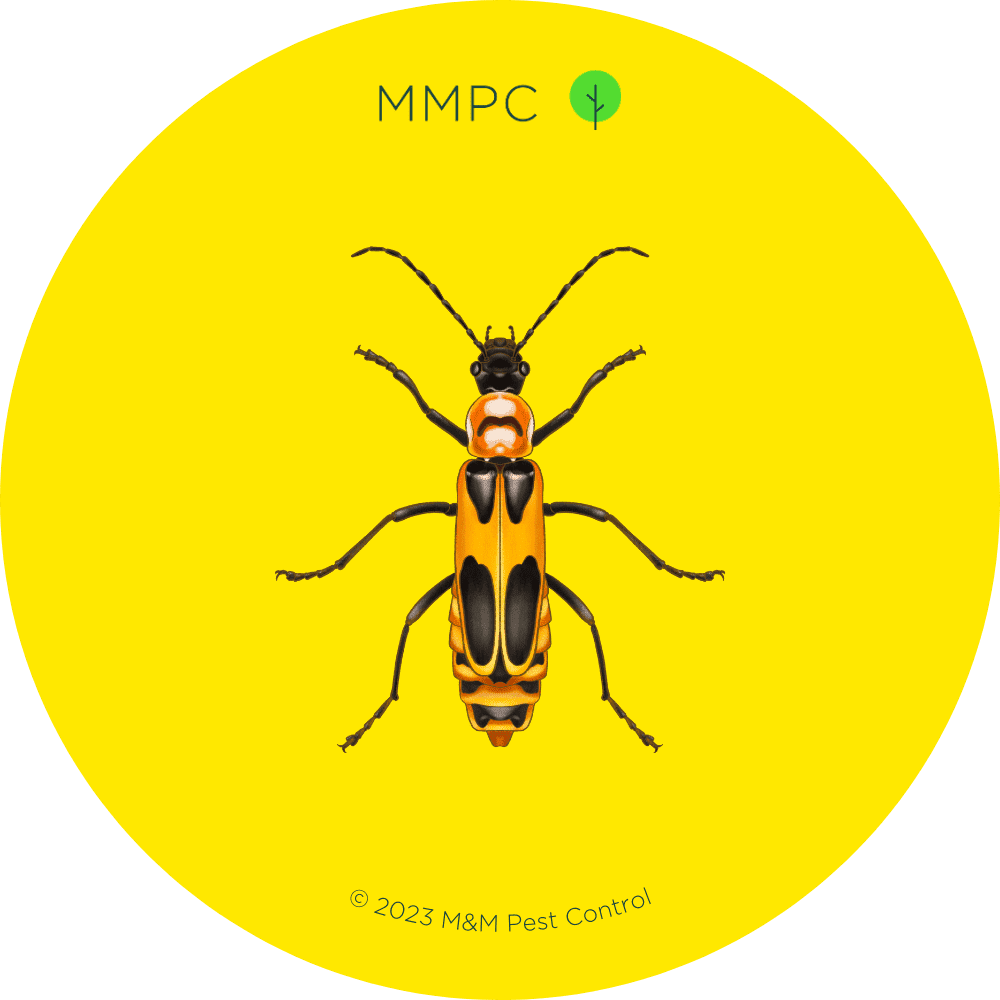
Size: 1/5″ – 5/8″ long (5 – 15 mm); about the size of a sunflower seed
Color: Red, orange, yellow, brown, or black; varies by species
Shape: Narrow, straight-sided body with long antennae, 6 legs, and 2 pairs of leathery wings
Identifying Features
- 6 long, slender legs
- Long, thin antennae with 11 segments
- Narrow, straight-sided body
- Leathery, flattened forewings (elytra) covering most of the abdomen
- Color and markings vary by species
- Able to fly
Boxelder Bug
Boisea trivittata
Boxelder bugs are usually found in areas around boxelder, maple, and ash trees.
During the fall, large numbers of these bugs can be seen sunbathing on the south face of trees, rocks, and buildings. As temperatures drop, they wander into homes in search of a warm place to survive the winter.
Boxelder bugs are harmless to humans, but their droppings may stain fabrics, upholstery, and other belongings. They also release an unpleasant odor when disturbed or crushed.
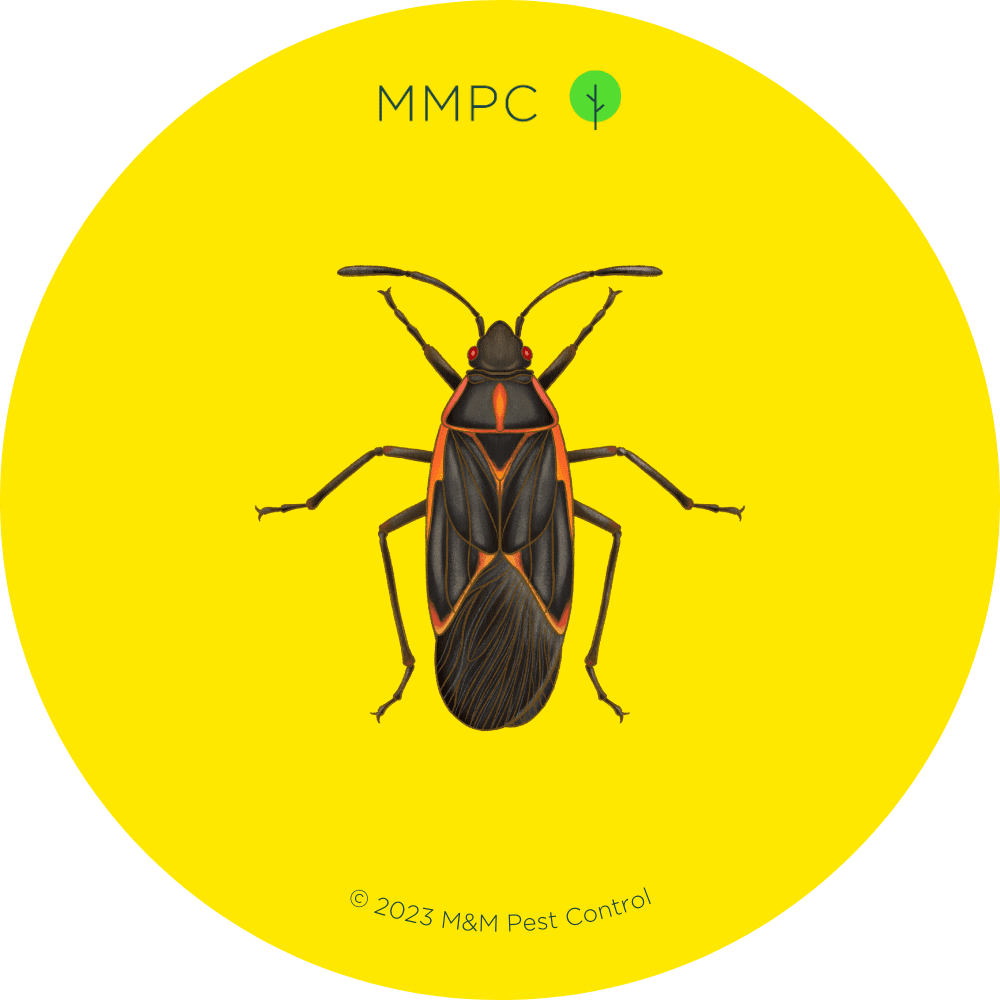
Size: 3/8″ – 1/2″ long (10 – 14 mm); about the size of a sunflower seed
Color: Brownish-black with red markings
Shape: Flat, oval body with long antennae, 6 legs, and 2 pairs of wings
Identifying Features
- 6 legs
- Thin antennae with 4 segments
- Small head with round, red eyes
- Flat, oval-shaped body
- 3 red stripes behind the head and around the margins of the wings
- 2 pairs of wings folding flat over the body
- Outer tips of forewings are black and translucent
- Able to fly
Brown Marmorated Stink Bug
Halyomorpha halys
Brown marmorated stink bugs are an invasive species of stink bugs that damages a wide variety of plants and agricultural crops.
The “marmorated” part of the name comes from their unique, marbled appearance. When disturbed or crushed, they release a pungent odor that some describe as similar to cilantro.
These stinky but otherwise harmless bugs start infesting homes and buildings during the fall in search of shelter for the winter.

Size: 1/2″ – 2/3″ long (12 – 17 mm); about the size of a dime
Color: Mottled brown
Shape: Flat, shield-shaped body with long antennae, 6 legs, and 2 pairs of wings
Identifying Features
- 6 brown legs with faint white bands
- Long antennae with 5 segments (white bands on the last 2 segments)
- Flat, shield-shaped body with wide shoulders and a pointed tip
- Alternating light and dark bands on the outer edge of the abdomen
- Leathery forewings and membranous hindwings folding flat over the body
- Able to fly
Western Conifer Seed Bug
Leptoglossus occidentalis
Western conifer seed bugs are overwintering insects that occasionally enter homes and buildings during the fall in search of shelter from the cold.
They sometimes make loud buzzing noises when they fly, which resembles the sound of a bumble bee.
Although they can be a nuisance, these bugs are harmless. They do not bite, sting, or cause damage to property. However, they release a pungent odor when disturbed or crushed.
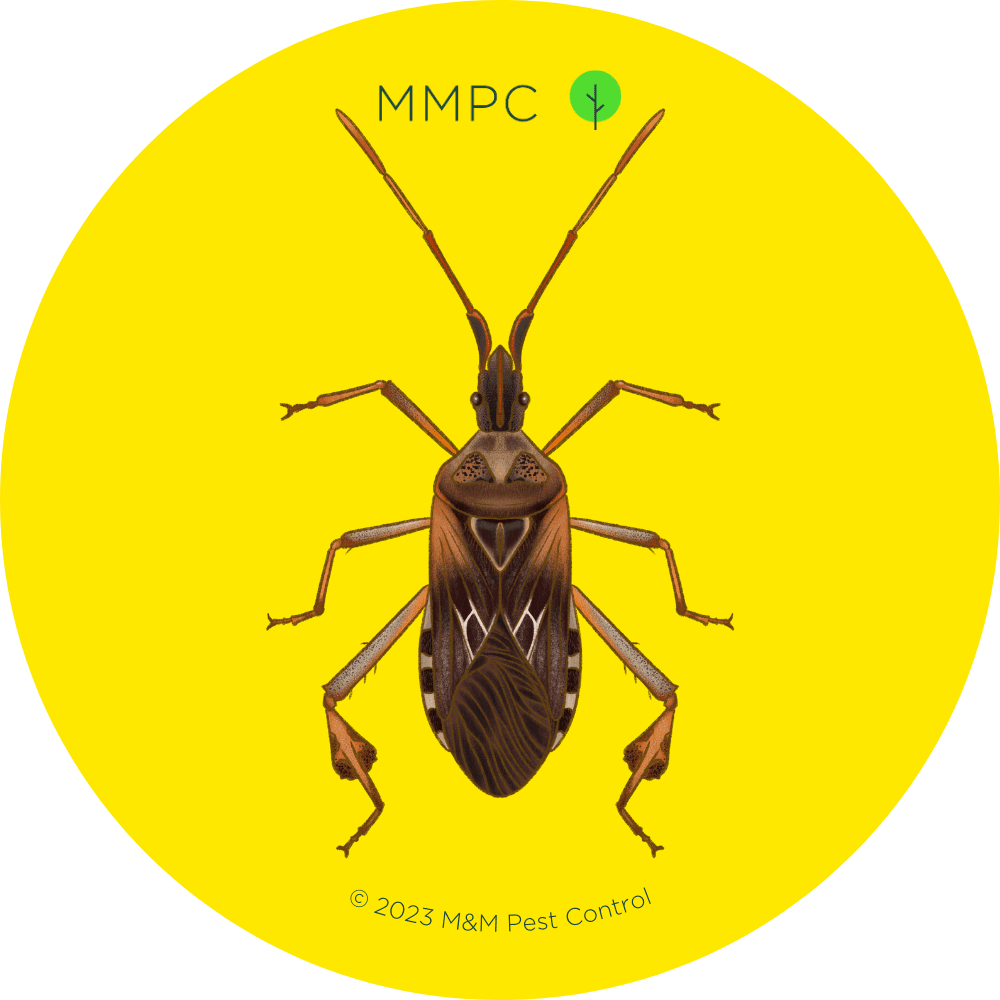
Size: 2/3″ – 4/5″ (16 – 20 mm); about the size of a penny
Color: Mottled brown
Shape: Flat, spade-shaped body with long antennae, 6 legs, and 2 pairs of wings
Identifying Features
- 6 legs (hind legs are extra long with a flattened, leaf-like enlargement on the tibiae)
- Long, thin antennae
- Flat, spade-shaped body with a small, tapered head
- Alternating light and dark bands on the outer edge of the abdomen
- White zigzag line across the middle of the wings
- Makes a buzzing noise when it flies
Pill Bug / Roly-Poly
Armadillidium vulgare
Pill bugs are not actually insects—they’re isopods, an order of crustaceans. In fact, they’re one of the only two kinds of crustaceans that are completely adapted to living on land (the other being sow bugs).
These nocturnal, soil-dwelling creatures are also known as “roly-polies” because of their ability to roll their bodies into a tight ball when feeling threatened.
Pill bugs are harmless to humans, and are mostly found in damp, shady areas outdoors with lots of plants around. They require high levels of moisture and typically do not survive long indoors.
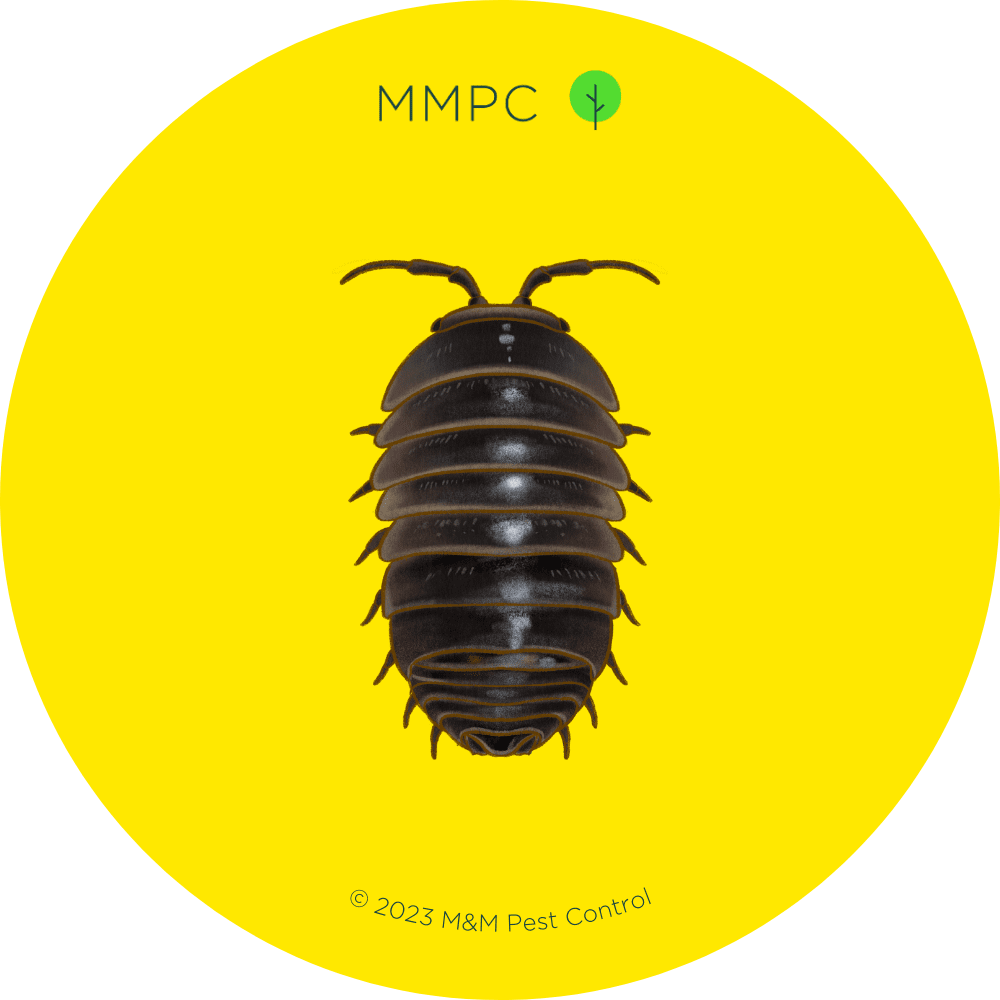
Size: 1/3″ – 2/3″ long (9 – 18 mm); about the size of a watermelon seed
Color: Light to dark gray
Shape: Oval, dome-shaped body with a plated exoskeleton, jointed antennae, and 14 legs
Identifying Features
- 14 legs
- 2 sets of antennae (1 large and jointed + 1 tiny and vestigial)
- Oval, dome-shaped body
- Hard exoskeleton with 7 overlapping plates
- Rolls into a tight ball when disturbed
Sow Bugs
Oniscus spp., Porcellio spp.
Sow bugs, like pill bugs, are nocturnal, soil-dwelling isopods that normally live outdoors in damp, shady areas.
The main difference between sow bugs and pill bugs is that sow bugs cannot roll into a ball.
Sow bugs are harmless to humans and mainly feed on decaying plant matter and are considered beneficial for gardens and landscapes. They require high levels of moisture and typically do not survive long indoors.
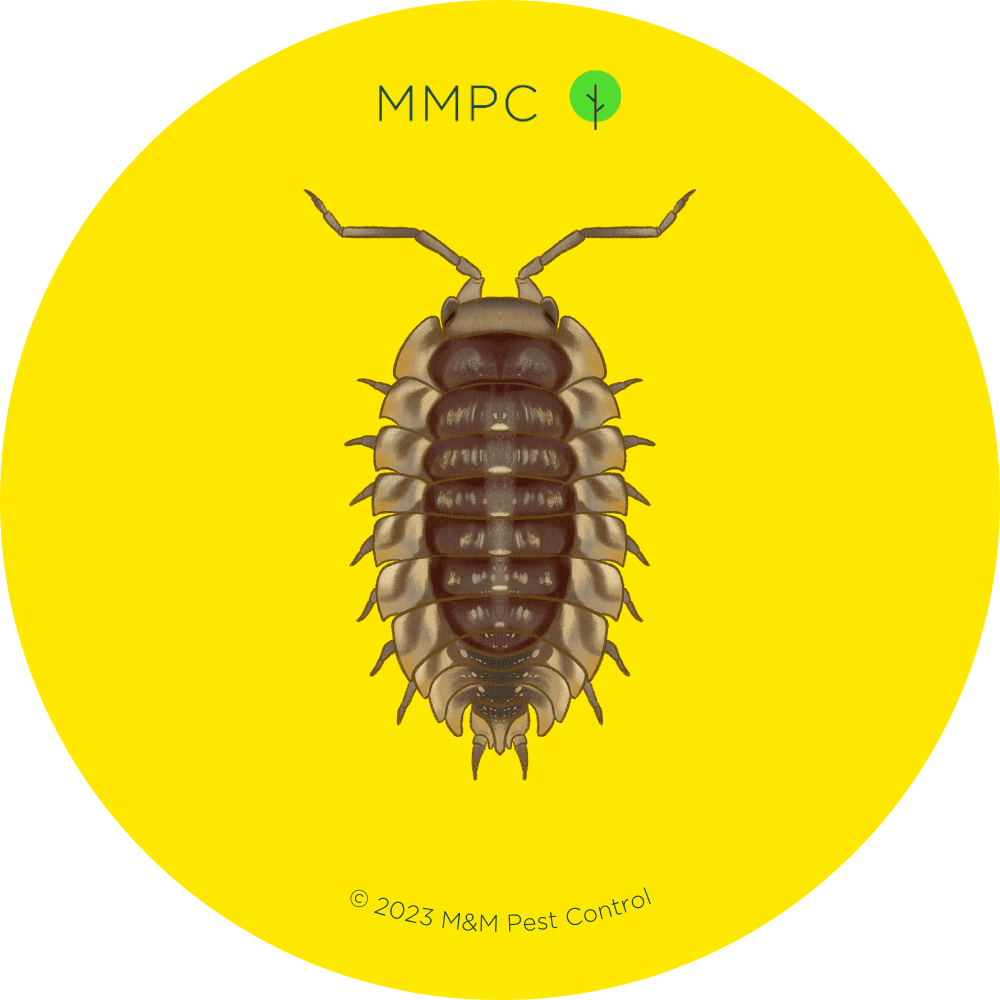
Size: 1/4″ – 2/3″ long (6 – 18 mm); about the size of a watermelon seed
Color: Light to dark gray
Shape: Oval, flattened body with a jagged exoskeleton, jointed antennae, 14 legs, and 2 tail-like appendages
Identifying Features
- 14 legs
- 2 sets of antennae (1 large and jointed + 1 tiny and vestigial)
- Oval, flattened body
- Hard exoskeleton with 7 overlapping plates with jagged edges
- 2 short, tail-like appendages (uropods) protruding from the rear


